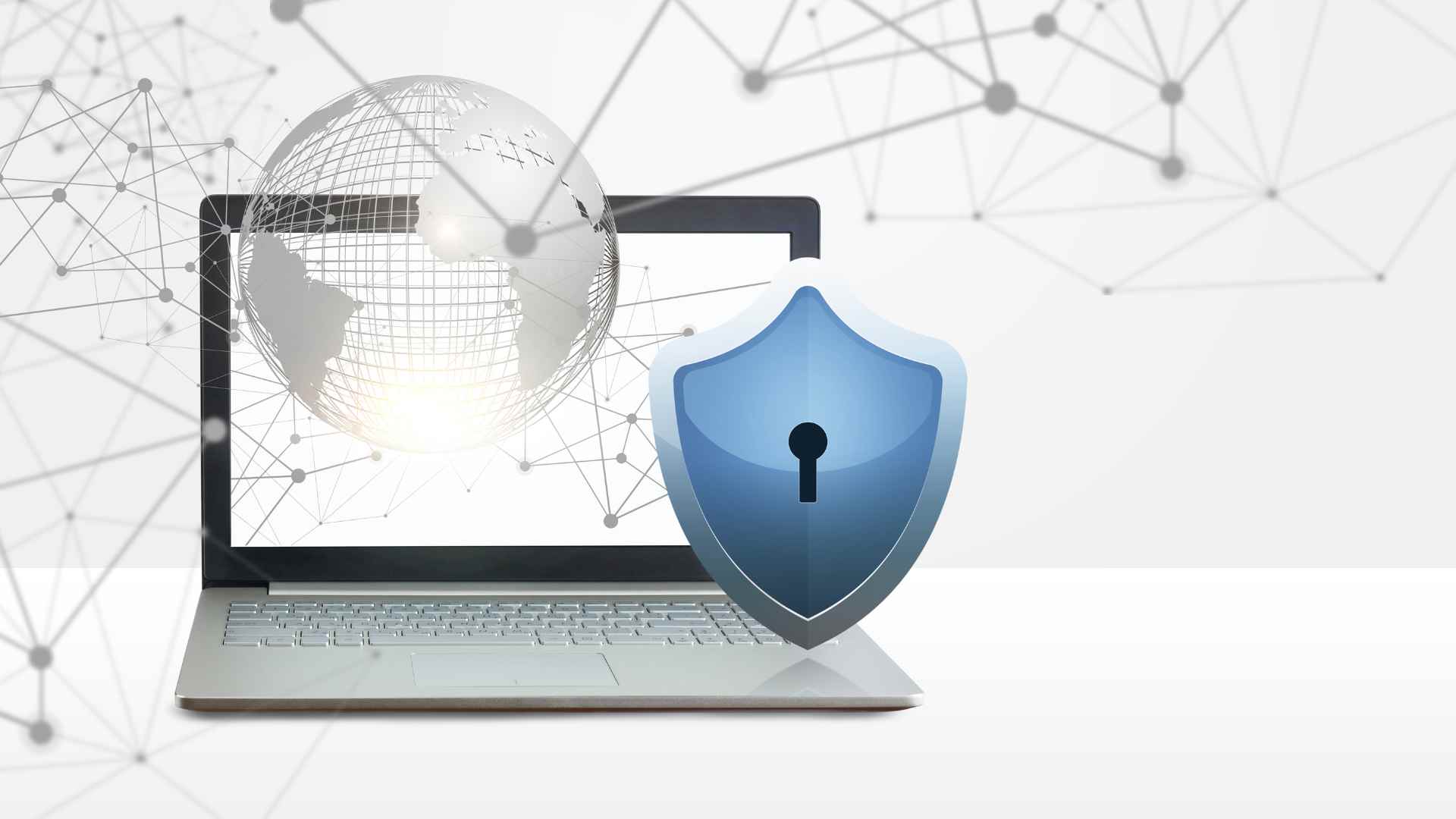Table Of Contents
The digital portals through which data operates in our hyperconnected world are, in themselves, the backbone for personal and professional interactions. However, the ease of accessibility invites significant risks. Data interception and theft are common cybersecurity threats that inflict devastating consequences upon individuals and businesses alike.
The consequences of compromised data range from financial fraud to reputational damage, and they undeniably justify attention to data security. This article delves into what data interception and theft mean, the ways attackers exploit vulnerabilities and practical measures one can take in defense of their information.
Understanding Data Interception and Theft
Data interception refers to the unauthorized capturing of information while it is being transmitted across a network. This could involve intercepting emails, monitoring financial transactions, or accessing sensitive files during transfer. Attackers often use tools like packet sniffers to analyze and capture network traffic without detection.
On the other hand, data theft involves stealing stored information from devices, databases, or cloud systems. This typically exploits security gaps or human errors, allowing attackers to access valuable data.
Though distinct, data interception and theft often overlap, with intercepted data serving as the starting point for broader theft operations.
The Stakes Are High: Real-Life Impacts of Cyberattacks
Those sorts of things are indicative of real risk. June 2024 saw an unfortunate case when ransomware attacked NHS hospitals in London. The Russian cybercriminals attacked the system, stealing more than 400GB of sensitive patient data. From paralysis in the service delivery to exposure of systemic faults in cybersecurity, the aftermath was a major one.
Such incidents remind us of the catastrophes that insufficient data protection can lead to complete operational paralysis to the breakdown of social trust.
How Cybercriminals Intercept and Steal Data
Understanding the methods attackers use is essential for developing effective defenses. Here are some of the most common tactics:
- Man-in-the-Middle Attacks: Attacks occur when an enemy imposes himself or herself between two communicating parties, intercepting messages and possibly altering them without the knowledge of either entity.
-
Phishing Scams: The way to get these attacks is to entice an individual to disclose information under the guise of emails, websites, or text messages that are perceived as legitimate.
-
Malware Deployments: The malicious software is doing evil things, like monitoring user activities, keystroke loggers, spyware, or ransomware locking the system till a ransom is paid.
-
Social Engineering: As far as human psychology is good at manipulating individuals into revealing sensitive information, attackers will typically appeal to a sense of urgency or authority.
-
SQL Injection Attacks: By exploiting the loopholes in a given database-driven application, hackers write a rogue SQL query to access protected stored data.
-
Brute Force Attacks: Various automated tools are deployed to try an excessive number of times with possible password combinations.
Five Key Reasons to Prioritise Data Security
The importance of safeguarding data extends beyond mere compliance with industry standards. Here are five critical reasons:
-
Assure Financial Asset Protection: Breaches can cause a loss of money making recovery as well necessary.
-
Ensure Compliance: Laws stipulate how to adhere to seriously required protections for personal data; otherwise, standards set their non-compliance that can lead to expensive fees.
-
Build Customer Trust: Customers entrust their information to security measures, thereby building brand loyalty and strengthening the bond.
-
Ensure Criminal Business Continuity: Offensive, nefarious attacks had disrupted operations when sufficient defenses were not in place.
-
Shield Reputation: Data breaches lead to massive public backlash and a loss of confidence in your organisation.
Actionable Steps to Prevent Data Interception and Theft
Below are ten strategies that form the cornerstone of an effective cybersecurity framework:
-
Employ Data Encryption
Encryption is one of the most effective tools against data interception. It converts readable information into encoded data, accessible only with a decryption key.
- End-to-end encryption (E2EE) ensures that messages and files remain secure during transmission.
- Full-Disk Encryption (FDE) protects the contents of devices, preventing unauthorized access to stored information.
By encrypting emails, financial transactions, and file transfers, you can significantly reduce the likelihood of interception.
2. Strengthen Authentication Protocols
Passwords remain a critical line of defense, but weak or reused passwords are major vulnerabilities.
- Adopt Strong Password Policies: Require passwords that combine uppercase and lowercase letters, numbers, and symbols.
- Implement Multi-Factor Authentication (MFA): Add an extra layer of security by requiring additional verification, such as a one-time code or fingerprint scan.
Businesses should also consider using password managers to generate and securely store complex passwords.
Secure Your Network
Unprotected networks are easy targets for attackers. Safeguard data in transit with these measures:
- Use Virtual Private Networks (VPNs) to encrypt your internet connection, especially when using public Wi-Fi.
- Set Up Firewalls to monitor and control network traffic, blocking unauthorised access attempts.
- Conduct Regular Network Monitoring to detect unusual activity, such as unauthorised logins or unexpected data transfers.
-
Provide Employee Training
Many cybersecurity breaches stem from human error. Educating employees on best practices and recognising threats can drastically reduce risk.
- Phishing Awareness: Train staff to identify and report phishing attempts.
- Simulate Social Engineering Scenarios: Help employees understand tactics used by cybercriminals.
- Create Incident Response Plans: Equip employees with the knowledge to act swiftly in the event of a suspected breach.
-
Keep Devices and Applications Secure
Attackers may exploit software not updated for known vulnerabilities in conjunction with physical devices that are open.
- Regular System Updates: Carry out update installations with the intention of patching known vulnerabilities.
- Deployment of Antivirus Software: Use tools designed to detect, safeguard against, or destroy any malware.
- Device Usage Policy: Develop security policies for personal devices used for business development.
-
Back-Up Your Data
In the event of theft or loss, data backups are invaluable for recovery.
- Implement Redundant Backups: Store copies of critical data both locally and in secure off-site locations.
- Opt for Cloud-Based Solutions: Encrypted cloud storage adds an extra layer of protection.
- Test Backup Systems Regularly: Verify that data can be restored effectively from backups.
-
Secure Online Accounts and Services
Protecting accounts is as important as safeguarding networks and devices.
- Enable Login Alerts: Receive notifications of suspicious activity, such as unrecognised login attempts.
- Review Account Activity Logs: Monitor accounts for signs of unauthorised access or unusual behaviour.
-
Conduct Regular Vulnerability Assessments
Systematic evaluation of your cybersecurity posture can identify weak spots before attackers exploit them.
- Perform Security Audits: Review access controls, software configurations, and network settings.
- Prioritize Patch Management: Regularly update software to address newly discovered vulnerabilities.
-
Restrict Data Access
Limiting access to sensitive data reduces exposure to potential breaches.
- Use Role-Based Access Control (RBAC): Grant employees access only to the information required for their roles.
- Monitor Privileged Accounts: Track the activities of users with elevated access rights.
-
Establish Incident Response Plans
Being prepared to respond quickly and effectively to breaches minimizes damage.
- Form Response Teams: Designate individuals responsible for handling cybersecurity incidents.
- Document Recovery Procedures: Create step-by-step guidelines for restoring systems and securing data after an attack.
Case Study: Lessons from the NHS Cyberattack
The NHS ransomware incident serves as a cautionary tale for organisations worldwide. The attackers exploited vulnerabilities to gain access to sensitive patient records, leading to widespread service disruptions.
Key takeaways include:
- Regular Security Audits to identify and fix vulnerabilities.
- Employee Training to reduce risks from phishing and social engineering.
- Network Segmentation to isolate critical systems from less secure areas.
By adopting these practices, organisations can better protect themselves against similar attacks.
The Future of Cybersecurity
Technological evolutions, then, are reinterpreting our data security measures. While artificial intelligence (AI) is being utilised more to predict or respond to threats, the blockchain has found possible applications in secure data storage and transfer.
Be that as it may, attention; be that as it may. As cybercriminal tactics grow evolutive, so too must our defenses. The key is an active attack-the basic means of ensuring that data remain secure in this wacky and pandering digital world.
Conclusion
Although risky, data interception and theft are manageable. An individual or organisation could very easily guarantee themselves against cyber threats by encrypting their data, utilising robust authentication methods, enforcing stringent network security, and increasing staff awareness through training.
The proposals made in this paper form a general security scheme, whether with respect to personal information protection or corporate data protection. Begin implementing these measures today to secure a safer digital future.
Get In Touch
Need expert IT assistance? Contact Hamilton Group today! Our specialists offer top-notch solutions tailored to your needs. Don’t let tech troubles hold you back.
Talk to us about your business 0330 043 0069
Or E-mail hello@hgmssp.com and one of our experts will get back to you.
Schedule A Quick Callback
The fastest way to figure out if we’re a good fit for your business is to have a quick chat about it. Schedule a 15-minute call so we can get right to the point.
Proactive, Responsive, Hamilton Group
Grab a drink and let’s have a quick chat about your business, and see how we can help you.
Book your call below or call us on 0330 043 0069


Carl Hamilton
A Message from our Founder/CEO
“We treat every client as if they were a part of our business to provide quality and comprehensive IT support that can be counted on 24/7, 365 days a year. We succeed only when you succeed.”
Let’s work together
IT Support You Can Trust
The best IT Support in Harrogate is also delivered across the UK 24/7 and we are ready to help you with all your Managed IT service needs. Services are provided in areas including Leeds, Liverpool, Manchester, Wakefield, Wetherby, York, Newcastle, Bradford, Bolton, Glasgow, Wigan, Derby, London, Luton, Birmingham, Sheffield, Peterborough, Portsmouth, Reading, Nottingham, Milton Keynes, Telford, and more.
Talk to us about partnering with an IT Support Company that cares
Move your business forward not back with HG.
Same Day Call-back.
Monday – Friday 09:00 – 17:30.
“Our email wasn’t performing very well so we asked Hamilton Group to take a look & Carl proposed to migrate us to MS Exchange.
Carl was very helpful throughout & the migration went very well.
He was on hand to sort out any teething issues, taking calls early morning & into the night, to ensure we were up & running smoothly.
Would recommend for knowledge, attention to detail & great customer service.”
Ian Porter
Fotofabric Limited












